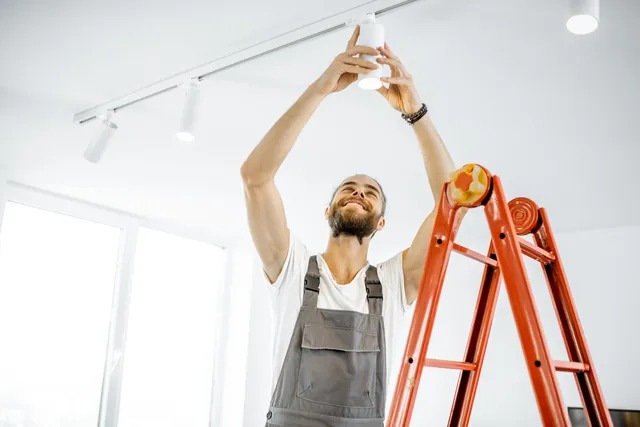If you’d only ever call out an electrician as a last resort, you’re not alone. According to Electrical Safety First, almost half of all men in the UK admit that they feel compelled to tackle household repair tasks themselves before calling an experienced tradesperson.
Since 2020, the UK has seen a stark rise in the number of people attempting household repairs without any formal qualifications in construction or electrical engineering. In this guide, we’ll take a look at why that is – and discuss some top tips for staying safe.
Why is DIY home improvement so popular?
Recent statistics show that throughout 2021, sales of electrical household appliances were up 7.4% from the year before, and furniture, lighting and household articles sales increased by 14%. With the figures to prove the surging DIY trend, it’s evident that trying your hand at household repairs doesn’t have to end in disaster. So, here’s a few tricks to follow along the way:
Get the right tools
It’s essential to use suitable tools for specific tasks. Choosing the right tool for the job is not only crucial to mastering the repair but should naturally boost your safety, productivity, and efficiency.
Any experienced electrician knows the importance of non-contact voltage and magnetic field indicators. Voltage detectors are one of the most reliable ways to pinpoint live wires and conductors without touching them, and both types boast an array of user-friendly features.
A multimeter is a tool used to calculate voltage, current and resistance. It’s standard for every electrician to need one, and most come with handy digital displays.
Lastly, although it might seem obvious, the importance of a quality, versatile set of screwdrivers should not be underestimated. Whenever you need to assemble, unpack, or install something, you’re bound to need a screwdriver.
Know when to call out a professional
For any task requiring a huge chunk of work like an electrical system overhaul or full rewire, it’s best getting the professionals in to do the job. There are so many areas where potential issues might arise, and not having the right expertise could delay, jeopardise, or even ruin the outcome.
Check your compliance
If you’re not qualified, you can still undertake electrical alterations. You’ll just need to comply with Part P of the Building Regulations, intended to restrict DIY electrical attempts on safety grounds.
Final checks
Once you’ve finished the job, it’s a good idea to get your handiwork checked over by a qualified electrician. Not only will this ensure you’ll be safe from any of the risks posed by improper or incomplete maintenance, but you’ll also enjoy the peace of mind that your house won’t be a danger zone.

